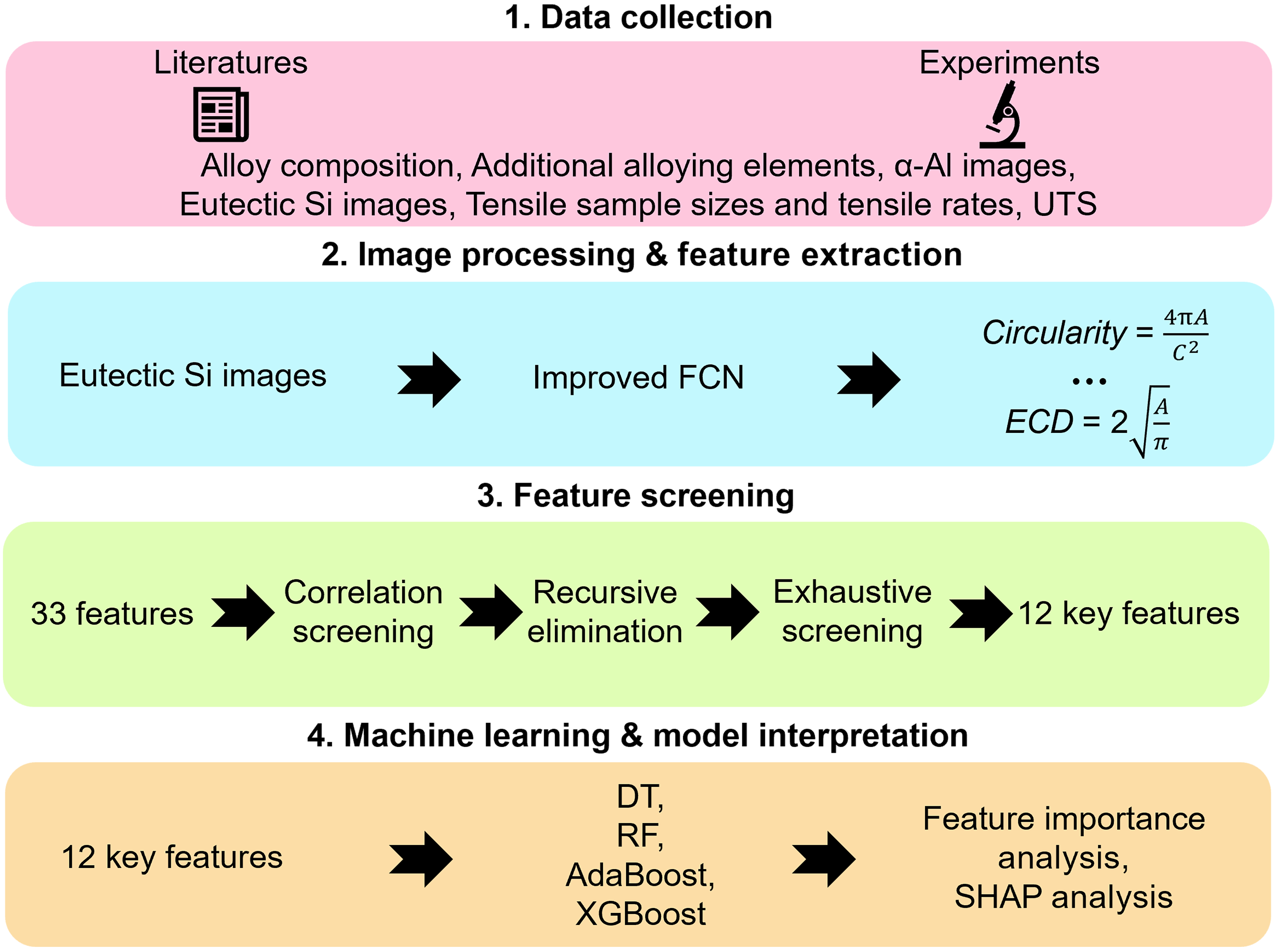Recent achievements of the team - prediction of tensile strength of Al Si alloy based on multimodal fusion learning
Our team has published a paper titled ‘Prediction of ultimate tensile strength of Al Si alloys based on multimodal fusion learning’ online in the new international journal ‘Materials Genome Engineering Advances’ in the field of materials genetic engineering. The School of Materials Science and Engineering at Shanghai University is the first unit, the School of Computer Engineering and Science is the second unit.

At present, the tensile strength of Al Si alloys is mainly obtained through tensile testing, which involves sample preparation, processing, and testing, requiring professional skills and testing equipment. There are problems such as long testing cycles, high costs, and material waste. In addition, preparing standardized tensile specimens for performance testing is a challenge for components with complex shapes. Therefore, how to efficiently and accurately obtain the tensile strength of materials is currently a challenging problem.
To address this issue, an innovative multimodal fusion learning framework that comprehensively considers composition and microstructure is proposed to predict the tensile strength of Al Si alloys. This work focuses on hypoeutectic Al Si alloys with wide applications. Firstly, we collected data from literature and experimental data on different modes, including alloy composition, added alloy elements, α - Al images, eutectic Si images, tensile sample size, and tensile rate. Secondly, using image processing techniques to extract microstructural feature parameters, the image is segmented and quantitatively analyzed. Then, a three-step feature screening was performed on 33 features from different modalities to obtain 12 key features. Finally, using 12 key features as inputs, four machine learning models (Decision Tree (DT), Random Forest (RF), Adaptive Boosting (AdaBoost), and Extreme Gradient Boosting (XGBoost)) were employed to construct a regression prediction model for tensile strength. The results showed that the XGBoost model performed the best among all models, achieving high accuracy in predicting tensile strength (R2=0.94, relative error less than 8.1%, absolute error less than 14.2 MPa) with limited data mainly from different literature. In addition, five mixed features (Grain size, Ti, Si, ECD, Number density) that significantly affect UTS and their critical values were identified through feature importance analysis and SHAP analysis. This work is expected to provide insights into the mapping relationship between the composition, microstructure, and properties of hypoeutectic Al Si alloys, and can be applied to other alloys.
Essay: Prediction of ultimate tensile strength of Al-Si alloys based on multimodal fusion learning
